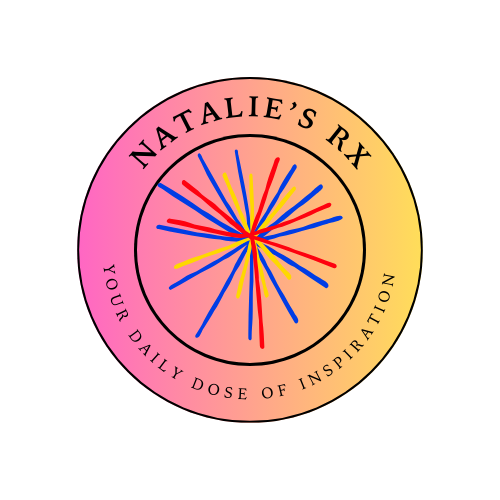How To Reduce Inflammation With Diet
**Is Chronic Inflammation Secretly Sabotaging Your Health?**
Ever feel like your body is waging a war against itself? That constant fatigue, aching joints, or even lingering brain fog might be more than just “getting older.” The culprit could be chronic inflammation—your body’s silent alarm that never shuts off. But here’s the good news: your diet can be a game-changer. With a few simple swaps and some delicious recipes, you can fight back, feel energized, and reclaim your health. Curious about how food can heal? Let’s dive in and uncover the power of an anti-inflammatory diet!
Inflammation is a natural response of the body’s immune system to injury, infection, or stress. While short-term inflammation can be beneficial for healing, chronic inflammation can wreak havoc on your health. It’s been linked to conditions such as heart disease, diabetes, arthritis, and even mental health issues like anxiety and depression. Fortunately, your diet can play a huge role in reducing inflammation and promoting overall well-being.

The Benefits of Reducing Inflammation
Lowering inflammation in your body has numerous benefits, including:
- Improved Joint Health: Say goodbye to morning stiffness and achy knees.
- Boosted Energy Levels: Chronic inflammation often causes fatigue.
- Better Heart Health: Reducing inflammation can lower the risk of heart disease.
- Enhanced Digestion: A healthy gut thrives when inflammation is minimized.
- Improved Mental Clarity: Brain fog may disappear as your body begins to thrive.
How Inflammation Affects Daily Life
Living with chronic inflammation can be exhausting. Painful joints, constant fatigue, and digestive discomfort can interfere with even the simplest tasks, like going for a walk or enjoying a meal with loved ones. Over time, these challenges can lead to frustration and reduced quality of life.
Anti-Inflammatory Diet: Foods to Embrace
To reduce inflammation, focus on nutrient-dense, whole foods. Here are some top choices:

Fatty Fish
Rich in omega-3 fatty acids, salmon, mackerel, and sardines help combat inflammation.
Try This Recipe: Baked Salmon with Lemon and Dill
Ingredients: 1 salmon fillet, 1 lemon, fresh dill, olive oil, salt, and pepper.
Instructions: Preheat your oven to 375°F. Place the salmon on a lined baking sheet, drizzle with olive oil, and sprinkle with salt, pepper, and dill. Add lemon slices on top. Bake for 15-20 minutes.
(Image by Sabrina St. from Pixabay)
Leafy Greens
Spinach, kale, and Swiss chard are packed with antioxidants and anti-inflammatory compounds.
Try This Recipe: Green Smoothie
Ingredients: 2 cups spinach, 1 banana, 1/2 avocado, 1 cup almond milk, 1 tablespoon chia seeds.
Instructions: Blend all ingredients until smooth. Enjoy this refreshing drink as a mid-morning pick-me-up.
(Image by Robert Owen-Wahl from Pixabay)


Berries
Blueberries, strawberries, and raspberries are rich in antioxidants that reduce oxidative stress.
- Try This Recipe: Berry Parfait
- Ingredients: 1 cup mixed berries, 1/2 cup Greek yogurt, 1 tablespoon honey, granola.
- Instructions: Layer yogurt, berries, and granola in a glass. Drizzle with honey for a naturally sweet treat.
Nuts and Seeds
Walnuts, almonds, flaxseeds, and chia seeds provide healthy fats and reduce inflammation.
Snack Idea: Mix a handful of nuts and seeds with a sprinkle of dark chocolate chips for an anti-inflammatory trail mix.
(Image by u_w0oy9vgmcs from Pixabay)


Turmeric
This golden spice contains curcumin, a powerful anti-inflammatory compound.
Try This Recipe: Turmeric Golden Milk
Foods to Avoid
Certain foods can trigger inflammation. Reduce or eliminate these from your diet:
- Processed foods (e.g., chips, cookies)
- Sugary beverages
- Refined carbs (e.g., white bread, pastries)
- Red and processed meats
- Trans fats (found in margarine and fried foods)

Overcoming Challenges
Transitioning to an anti-inflammatory diet might feel daunting at first. Cravings for sugary or processed foods can be tough to overcome, but start small. Replace one processed snack with a healthier option daily. Gradually incorporate more fruits, vegetables, and whole foods into your meals. Planning ahead and meal prepping can also make the transition smoother.
Final Thoughts
Reducing inflammation through diet is a journey toward a healthier, more vibrant you. By incorporating nutrient-rich foods and making simple swaps, you’ll not only feel better but also build habits that last a lifetime. Remember, every small step counts. So why not start today? Grab some berries, whip up a green smoothie, or savor a cup of golden milk—and toast to your health!
Disclaimer:
The information provided in this article is for educational and informational purposes only and is not intended as a substitute for professional medical advice, diagnosis, or treatment. Always seek the guidance of your healthcare provider or a qualified medical professional before making any dietary changes or implementing any suggestions discussed in this article, especially if you have underlying health conditions or are taking medications.
